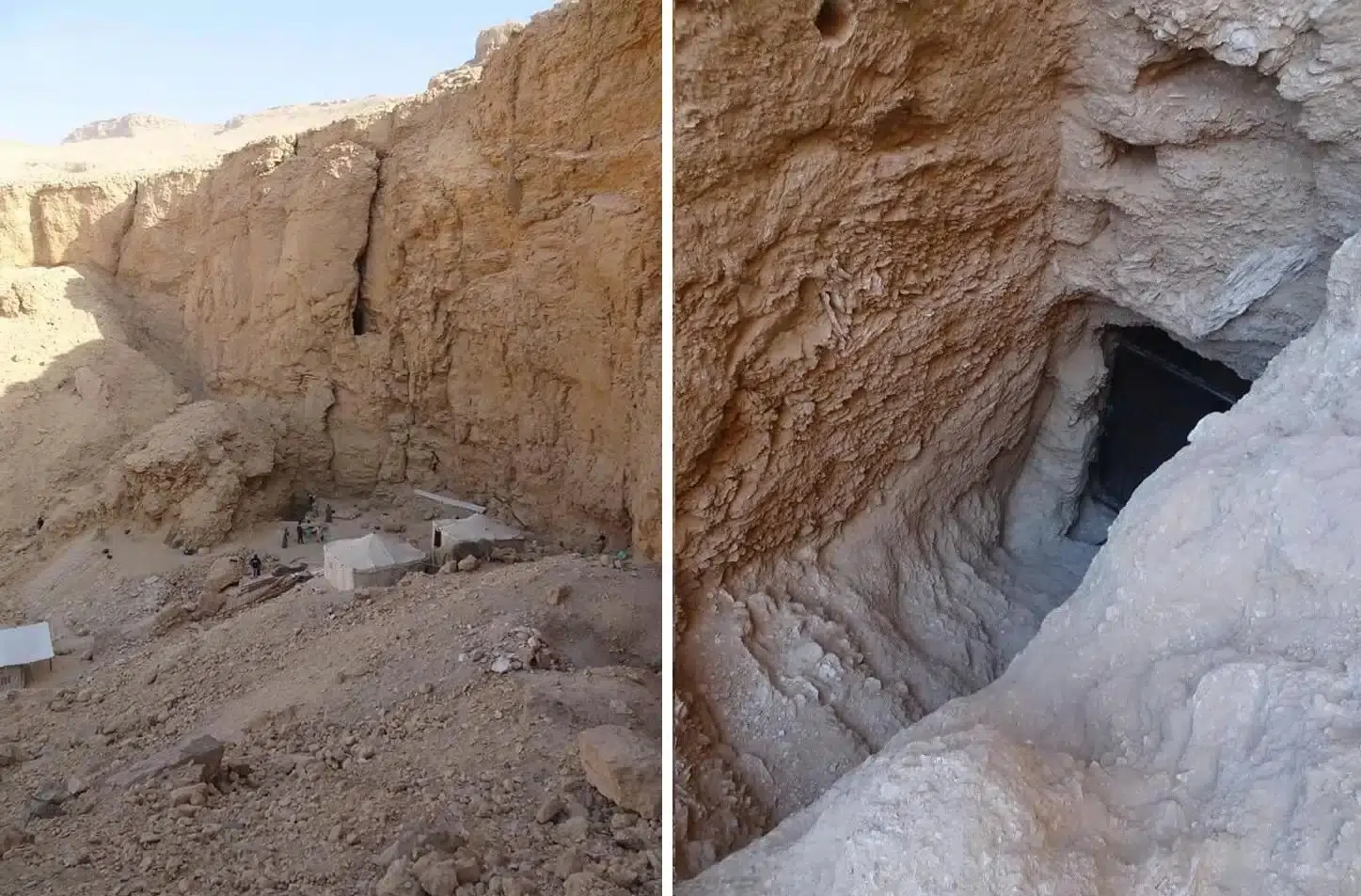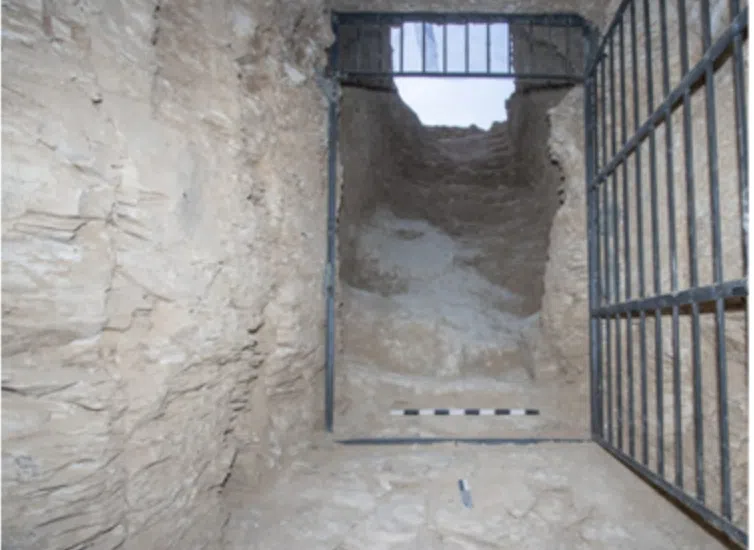
A royal tomb dating back 3,500 years was discovered by archaeologists in the area of Luxor in Egypt. Hatshepsut was a female pharaoh, and it is possible that she co-ruled ancient Egypt around the time the tomb was built.
In a statement, archaeologists said, “Partial inscriptions and ceramic evidence suggest this was constructed during the joint-reign of Thutmose III and Hatshepsut.”
A group of archaeologists from the Ministry of Tourism and Antiquities and a mission from the New Kingdom Research Foundation, connected to the MacDonald Institute for Archaeological Research at the University of Cambridge, were responsible for uncovering the tomb.
The team was visiting a region close to Luxor known as the Wadi Gabbanat el-Qurud, situated near the Valley of the Kings. They then came across the tomb in October 2022.
The time of Hatshepsut, a female co-ruler

When Thutmose III ascended the throne in 1479 B.C., he was a young boy—possibly just two years old—and his stepmother, Hatshepsut, served as regent and eventually co-ruler until her death in roughly 1458 B.C.
During their rule together, a temple was built at Deir el-Bahri, and an Egyptian expedition to Punt, perhaps in present-day East Africa, was a resounding success.
Multiple people were buried in the recently discovered tomb, and “the architecture, as currently understood, indicates the tomb was altered several times shortly after it was first constructed,” the researchers revealed.
The tomb’s original inhabitant remains a mystery to the team of archaeologists. In their statement, they said that the tomb’s “surviving decoration and the size of the few accessible chambers currently point to a royal burial of some importance, [and this is] most likely, given the location [near the Valley of the Kings], the burial of a great royal wife and several children of a Thutmosid king.”
It is possible that there is more than one set of human bones there, according to the experts. However, water damage from earlier floods severely compromised the tomb’s structure, and the experts said that “repeated flooding has completely filled the main axis of the tomb with concrete-hard debris and has caused the ceilings of the tomb to weaken and collapse.”
The tomb’s components are still being examined and studied, and, according to the statement, “it will take several seasons to clear the chambers and make the tomb safe.”
Other discoveries in Luxor
The Luxor area of Egypt is rich in archaeological discoveries, with many notable finds from ancient Egyptian history.
Amongst the most significant discoveries in the area is also the Valley of the Kings, where several tombs belonging to pharaohs and nobles of the New Kingdom period were discovered.
The Temple of Hatshepsut, a well-preserved temple dedicated to the goddess Amun, and the Ramesseum, a temple built for pharaoh Ramesses II, known for its large statues, are other such noteworthy findings in the region.
Lastly, the Temple of Luxor and the Temple of Karnak, both dedicated to the god Amun, are also likewise in Luxor. These are known for their impressive architecture and well-preserved inscriptions and reliefs.
See all the latest news from Greece and the world at Greekreporter.com. Contact our newsroom to report an update or send your story, photos and videos. Follow GR on Google News and subscribe here to our daily email!



